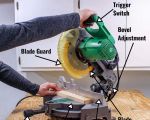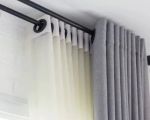
May 12, 2025
How to Use a Pocket Hole Jig – A Complete Beginner's Guide
I still remember the first time I used a pocket hole jig. It was a game-changer for my woodworking projects, especially when I was building furniture and trying to create tight, durable joints. As someone who started with basic tools, discovering the pocket hole jig opened up new possibilities for me, and I’m excited to share what I’ve learned with you.
The pocket hole jig is one of the most popular woodworking tools for joining wood pieces. It’s incredibly effective for creating strong, secure, and almost invisible joints. Whether you're building cabinets, furniture, or even just trying to fix a broken piece of wood, a pocket hole jig can make the process much easier and more professional. But if you're new to woodworking or have never used one before, it might seem a little intimidating at first. Don’t worry! In this guide, I’ll walk you through everything you need to know about how to use a pocket hole jig, from setup to tips for the best results.
Why Use a Pocket Hole Jig?
Before we dive into the "how," it’s helpful to understand why you’d want to use a pocket hole jig in the first place. When I first started woodworking, I used traditional methods for joining wood, like dowels and biscuit joinery, but I found them to be time-consuming and challenging to get perfect every time. That’s when I discovered the pocket hole jig.
Here’s why I think this tool is a must-have for beginners:
Easy to Use: The pocket hole jig is straightforward to set up, even for someone new to woodworking. Once you get the hang of it, you can create strong joints in no time.
Perfect for Woodworking Projects: Whether you're building cabinets, furniture, or frames, a pocket hole jig can help you create seamless joints.
Time-Saving: Compared to traditional joinery techniques, pocket hole joinery is faster and simpler. You don’t need to worry about alignment or clamps as much, which can speed up the entire process.
Strong and Durable Joints: Pocket hole joints are incredibly strong, making them ideal for pieces that will endure weight and pressure.
Understanding Pocket Hole Jigs
A pocket hole jig is essentially a tool that allows you to drill angled holes into wood to join two pieces together. The drill bit creates a pocket hole, which is essentially a hole drilled at an angle into one piece of wood. You then use screws to connect the two pieces of wood through this hole.
There are different types of pocket hole jigs available in the market, ranging from simple, manual jigs to more advanced, adjustable ones. When I started out, I used a basic Kreg pocket hole jig, which is one of the most popular brands among DIYers and professionals alike.
Kreg Jig K5: A versatile, adjustable jig with excellent clamping features, making it easier to work with different wood thicknesses.
Mini Pocket Hole Jig: A compact option that’s perfect for smaller projects or when you're working in tight spaces.
How to Use a Pocket Hole Jig Step-by-Step
Now, let's get into the step-by-step process. I’ll take you through it, from setup to making the perfect joint. The best part is, once you learn the basics, you’ll be able to use your pocket hole jig confidently on almost any project!
1. Choose the Right Jig for Your Project
The first step is choosing the right pocket hole jig. The type of jig you use will depend on the size and scope of your project. If you're just starting, a basic model like the Kreg Jig K4 is a good option. If you plan to do more complex projects, investing in a more advanced model, like the Kreg K5 or the Kreg Foreman, might be worthwhile.
2. Set Up the Pocket Hole Jig
Once you have your jig, it’s time to set it up. Most jigs are designed to be adjustable, allowing you to change the depth and angle of the pocket hole depending on your project. The setup process typically involves the following:
Clamp the jig to the wood: Position the jig where you want to drill your pocket hole. Most jigs have built-in clamps or adjustable guides that help hold the jig in place.
Adjust the settings: Depending on the thickness of your wood, adjust the depth collar on the drill bit to ensure the correct angle.
Drill the hole: Use a drill to create the pocket hole at the designated angle. Be sure to drill slowly and steadily for the best results.
3. Drill Pocket Holes in Your Wood
With the jig set up, it’s time to drill. Position the drill bit in the jig and drill a hole at the desired angle. I like to take my time with this step to ensure the holes are clean and precise. If you’re working with thicker wood, you may need to drill a second hole for added strength.
4. Assemble Your Pieces
Now that you’ve drilled the pocket holes, it’s time to assemble your project. Align the two pieces of wood, and then insert screws into the pocket holes to join them together. This step is crucial for achieving a secure bond. Be sure to drive the screws in straight to avoid damaging the wood.
5. Check for Alignment
Once everything is assembled, check for alignment. Make sure the joints are flush and that the pieces are properly aligned. If you notice any issues, you can easily adjust the screws or clamp them in place until everything fits properly.
Additional Tips for Pocket Hole Jigs
Use the Right Screws: Be sure to use screws specifically designed for pocket hole joinery. These screws are specially designed to hold up well over time.
Clamp Your Work: If you’re working with larger pieces, using clamps can help keep everything aligned while you work. It prevents shifting and ensures a clean, strong joint.
Practice: If you’re new to pocket hole joinery, I recommend practicing on some scrap pieces of wood before starting your actual project. This will help you get the feel of the tool and the process.
Best Projects for Pocket Hole Jigs
Pocket hole jigs are perfect for a variety of woodworking projects. Some of the best projects for using a pocket hole jig include:
Furniture Building: Whether it’s a coffee table, bookshelf, or even a custom cabinet, pocket hole joinery is perfect for creating sturdy furniture.
Cabinetry: Pocket holes are great for assembling cabinets, particularly for areas where traditional joinery techniques might be too cumbersome.
Wooden Frames: Use a pocket hole jig to make strong, professional-quality wooden frames for art, photos, or mirrors.
Repairs: Pocket holes are ideal for fixing broken or damaged wood furniture and can help you create lasting repairs.
Final Tips and Thoughts
Learning how to use a pocket hole jig has been one of the most rewarding experiences for me as a DIY enthusiast. It has allowed me to take on bigger and more complex projects with confidence. The versatility and simplicity of the tool make it a must-have for anyone interested in woodworking.
With the right setup, a bit of practice, and the tips I’ve shared here, you’ll be able to use a pocket hole jig like a pro in no time. If you’re looking for quality jigs or woodworking tools, be sure to check out ToolNest for the best options available.








